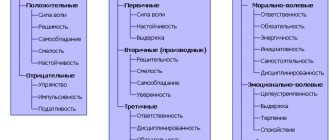Sensitive ataxia
In most cases, this pathology occurs due to damage to the posterior columns, posterior nerves, peripheral nodes, thalamus opticus, and parietal cortex. Signs of sensitive ataxia can be observed in all limbs at once, or in only one of them. Doctors often diagnose signs of ataxia, which occurs due to a disorder of the joint-muscular sensation in the legs.
Characteristic signs of ataxia will be the patient's instability, excessive bending of his legs at the knee and hip joints. Many patients often feel as if they are walking on cotton wool or a carpet. Patients try to compensate for walking impairments with the help of vision, as they begin to constantly look at their feet. Due to severe damage to the posterior columns, patients almost completely stop walking.
Publications in the media
Ataxia is a movement disorder manifested in the inability to coordinate voluntary movements; may be a consequence of cerebellar disorders, disorders of the motor or sensory systems. Genetic aspects. A number of forms are based on defects in calcium and other channel genes. Types and genes: Spinocerebellar ataxia: • type 1: 164400, ATX1, SCA1 (ataxin 1, 601556, 6p23); • type 2: 183090, ATX2, SCA2 (ataxin 2, 601517, 12q24); • type 4: SCA4, 600223, 16q22.1; • type 5: SCA5, 600224, 11p11 q11; • type 6: 183086, CACNA1A, CACNL1A4, SCA6 (a1A CE voltage-gated calcium channel P/Q type, 601011, 19p13); • type 7: 164500, SCA7, OPCA3, 3p21.1 p12; • type 8 (infantile with sensory neuropathy): 271245, SCA8, IOSCA, 10q24. Ataxia with vitamin E deficiency: 277460, TTPA, TTP1, AVED (600415 [tocopherol transport protein], 8q13.1 q13.3). Cerebellar ataxia: • Cayman Islands: 601238, ATCAY, CLAC, 19p13.3.
Classification and clinical picture
• By nature •• Static (torso ataxia) - imbalance in standing and sitting positions •• Dynamic (locomotor) - loss of coordination during voluntary movements of the limbs, especially the upper ones •• Static-locomotor - disorder of standing and walking.
• According to the location of the main lesion •• Sensitive (posterior columnar) ataxia occurs with damage to the posterior columns of the spinal cord, less often - with damage to the peripheral nerves, dorsal roots, thalamus optic, and parietal cortex. Observed in neurosyphilis (tabetic ataxia, often combined with Argyll Robertson syndrome), funicular myelosis, some forms of polyneuropathies, vascular disorders, tumors. General instability is characteristic. When walking, the patient bends his legs excessively at the knee and hip joints and lowers them to the floor with excessive force (stamping gait). Control of vision reduces, and closing the eyes sharply increases the phenomena of ataxia •• Cerebellar ataxia is a static or dynamic ataxia that occurs when the cerebellum and/or its pathways are damaged. Observed in multiple sclerosis, tumors, encephalitis, vascular lesions in the cerebellum and brain stem, degenerative diseases of the cerebellum ••• In the Romberg position and when walking, the patient deviates or falls towards the affected cerebellar hemisphere ••• With damage to the cerebellar vermis, a fall in different directions is observed , often backwards (drunk gait) ••• Vision control has little effect on the severity of coordination disorders ••• Speech is slow, drawn out, jerky, sometimes chanted (articulatory ataxia) ••• Changes in handwriting - unevenness, sweepingness, macrography ••• On the side lesions usually have reduced muscle tone •• Vestibular ataxia occurs when the vestibular apparatus is damaged. Develops in Meniere's disease and other diseases of the inner ear, brainstem encephalitis, tumors of the fourth ventricle. Characteristic symptoms: systemic dizziness (the patient feels that all objects are moving in a certain direction); horizontal nystagmus, nausea, vomiting, worse when turning the head; the patient staggers randomly to the sides or falls •• Cortical ataxia occurs when the frontal or temporo-occipital cortex is damaged. Registered in case of tumors, abscesses, cerebral circulation disorders ••• The leg contralateral to the lesion suffers the most, instability appears when walking, especially when turning, deviation to the side opposite to the affected hemisphere. Vision control has little effect on the degree of ataxia. In case of severe lesions, the patient cannot stand or walk at all (astasia-abasia) ••• Other symptoms of damage to the frontal lobe (changes in the psyche, grasping reflex, impaired sense of smell).
• According to etiology, they additionally distinguish •• Alcohol ataxia, which occurs during alcohol intoxication •• Hysterical ataxia is a disease of psychogenic origin with great variability in manifestations, depending on the emotional state of the patient.
Treatment • Symptomatic • Therapeutic exercises aimed at training the sense of balance.
ICD-10 • G11 Hereditary ataxia • G60.2 Neuropathy in combination with hereditary ataxia • G80.4 Ataxic cerebral palsy • R26 Gait and mobility disorders • R27.0 Ataxia, unspecified
Cerebellar ataxia
It occurs due to serious damage to the cerebellar vermis, as well as its legs and hemispheres. However, it is worth noting that cerebellar ataxia can be a symptom of diseases such as multiple sclerosis, encephalitis, or a malignant neoplasm in the cerebellum or brain stem. Patients with this pathology usually fall toward the damaged cerebellar hemisphere when walking. During such episodes, even falls are possible.
The patient usually staggers greatly when walking, and also places his legs too wide, his movements are slow, sweeping and awkward. Impaired coordination remains virtually unchanged even with vision control. Patients may experience serious speech disturbances, which gradually slow down, become scanned and drawn out. There are also problems with handwriting, which becomes uneven and splayed.
Clinical picture
Uncertainty when walking appears from the onset of the disease, then the gait becomes unsteady. Weakness in the legs and stumbling appear 5–10 years after the onset of the disease. 20% of patients are concerned about numbness in the lower extremities, hearing loss, and speech impairment. Half of the patients experience discomfort in the heart area, possible interruptions in heart function, and shortness of breath during exercise.
An objective examination reveals mild paresis in the legs (40%), muscle hypotonia (70%), gradually developing atrophy of the muscles of the lower extremities (20%), decreased knee and Achilles reflexes (80%), hypoesthesia in the lower extremities (30%), violation of deep sensitivity (50%). Ataxia, dysdiadochokinesis, and intention tremor in the hands are noted (up to 100%). Large-scale nystagmus and scanned speech are observed in 75% of cases, head tremor in 30%, hypoacusis in 20%. Mild acrocyanosis (30%), skeletal abnormalities (kyphoscoliosis, cavus foot) (50–70%) are detected.
Vestibular ataxia
This pathology occurs due to damage to the vestibular nerve, labyrinth, cortical center and nuclei in the brain stem. This type of ataxia is observed in various ear diseases, brainstem encephalitis, Meniere's syndrome, and tumors of the fourth ventricle of the brain. The main sign of the pathology is considered to be regular severe dizziness, as a result of which the patient begins to feel as if all objects are moving in the same direction. Turning his head, the patient feels increased dizziness.
Severe dizziness leads to unsteady gait and falls. It is also noticeable that the patient tries to make very careful head movements. Vestibular ataxia is also characterized by symptoms such as vomiting, nausea and horizontal nystagmus.
Cortical ataxia
Cortical ataxia in most cases occurs due to damage to the frontal lobe of the brain. Its most common causes include tumors, circulatory disorders in the brain, and abscesses. In the case of this type of ataxia, symptoms such as unsteadiness when walking, falling over, or bending to the side appear.
Due to severe damage to the frontal lobe, patients may lose the ability to walk and stand. Cortical ataxia is also characterized by other symptoms: mental changes, grasping reflex, impaired sense of smell. In many ways, the clinical picture of cortical ataxia is similar to the symptoms of cerebellar pathology.
4.Treatment
There is currently no treatment that reverses or even stops neurodegeneration. All types of therapy practiced today are purely palliative in nature and are aimed at mitigating the most maladaptive symptoms that reduce the quality of life and dominate in a specific clinical picture. As a rule, medications are prescribed to improve neurotrophism (nutrition of nerve tissue), vitamin complexes, massage, and physical therapy to correct and/or compensate for movement disorders.
Cerebellar Pierre-Marie ataxia
The main manifestation of the disease is cerebellar ataxia. The disease occurs due to hypoplasia of the cerebellum, atrophy of the pons and inferior olives. Typically, the first signs of pathology appear in a patient at the age of 35 years.
The most characteristic symptoms of the disease are considered to be disturbances in gait, speech and facial expressions. In addition, patients usually experience dysmetria, static ataxia, adiadochokinesis, increased tendon reflexes, and decreased strength in the muscles of the limbs. Patients are often diagnosed with oculomotor disorders:
- lack of convergence;
- ptosis;
- paresis of the abducens nerve;
- Argyll-Robertson sign;
- decreased visual acuity;
- narrowing of visual fields;
- atrophy of the optic nerves.
Familial Friedreich's ataxia
This disease is hereditary and occurs due to damage to the spinal systems. As a result of research, it was found that many patients with this type of ataxia often have consanguineous marriages in their pedigree. The main symptom of ataxia is an unsteady and clumsy gait.
The gradual development of the disease leads to impaired hand movements, problems with facial expressions, slowed speech, and hearing loss. Further development of ataxia leads to changes in the skeleton, heart rhythm disturbances, endocrine disorders, frequent dislocations, and kyphoscoliosis.
Diagnosis of ataxia
- Diagnosis of the disease begins with the collection of complaints and anamnesis. Namely, the doctor must ask the patient how long ago he began to have complaints about unsteadiness of gait and poor coordination of movements, and how often and regularly these symptoms appear. It is definitely worth checking with the patient whether his relatives have had this disease. It is also necessary to find out whether the patient has taken any medications such as benzodiazepines and barbiturates.
- Patients suspected of having ataxia require a neurological examination. This examination involves assessing coordination of movements and gait, assessing strength in the limbs and muscle tone, the presence of nystagmus, and strength in the limbs.
- A correct assessment of hearing will also require an examination by an otolaryngologist.
Additional tests
For a more detailed study of the disease, a consultation with a neurosurgeon will be required, as well as a number of instrumental studies.
- In particular, a lot of information about the disease can be obtained using electroencephalography. This technique evaluates the electrical activity of various parts of the brain, which tends to change in various diseases.
- No less effective techniques are also CT and MRI of the brain. They allow you to study the structure of the brain layer by layer, detect violations of the structure of its tissues, identify ulcers, tumors, and hemorrhages.
- Magnetic resonance angiography will help detect tumors in the brain and assess the integrity of the arteries in the skull.
Complications of ataxia
Treatment of ataxia must be timely, as otherwise serious complications are possible. One of the most dangerous complications of ataxia is heart failure. This is an acute or chronic condition, which is accompanied by shortness of breath, swelling, and frequent fatigue. The danger of the pathology is that it can cause pulmonary edema. Today, heart failure is one of the common causes of death. No less dangerous complications of ataxia are repeated infectious diseases and respiratory failure.
Read also
Noise in ears
Tinnitus cannot be called an independent disease.
It would be more accurate to designate it as a hearing disorder, which manifests itself as a hum, ringing or buzzing in the ears, then, as the real source of sound... Read more
Benign positional paroxysmal vertigo
How great it is when you feel dizzy with happiness, but unfortunately there are people who are afraid of this symptom because this symptom greatly interferes with their quality of life. Dizziness is not a diagnosis, it is a symptom...
More details
Meniere's disease
Meniere's disease is a disease in which the leading symptoms are systemic dizziness, accompanied by hearing loss, a feeling of fullness and tinnitus. Paroxysmal dizziness,…
More details
Fainting
Attacks of dizziness and fainting are pathological conditions that occur when the body overreacts to certain triggers, such as extreme emotional...
More details
Kinetosis/motion sickness-motion sickness
Occurs when driving in a vehicle, ship or carousel. It begins with malaise, fatigue, yawning and pale skin, then mild dizziness occurs, followed by cold...
More details
Treatment of ataxia
Treatment of ataxia is aimed at eliminating the etiological factor that triggered the development. Depending on the specific disease, the following operations may be prescribed:
- tumor removal;
- elimination of hemorrhage;
- removal of the abscess and subsequent antibiotic therapy.
In rare cases, a procedure to relieve pressure in the posterior fossa may be necessary. Namely, this procedure is carried out if a patient has an Arnold-Chiari malformation, which is characterized by a slight descent of part of the cerebellum into the opening of the skull, which ultimately leads to severe compression of the brain stem. Ataxia can also be caused by hydrocephalus, which is characterized by the accumulation of cerebrospinal fluid in the ventricular system of the brain. In this case, doctors create an outflow of cerebrospinal fluid, which normalizes metabolism in the brain.
If the cause of this serious disease is high blood pressure, it is imperative to normalize it with the help of drug therapy. In case of circulatory problems in the brain, drugs that improve metabolism and blood flow are also indicated. These primarily include nootropics and angioprotectors.
Ear diseases can also lead to the development of ataxia. In case of infectious brain damage caused by ear pathology, a course of antibiotic therapy is prescribed. If there is a lack of vitamin B12, it must be compensated. To eliminate poisoning, vitamins A, B, and C are prescribed. For demyelinating diseases, hormonal medications are indicated, as well as plasmapheresis. This procedure involves removing blood plasma, but preserving blood cells.
Ataxia is a dangerous disease because, due to lack of coordination, the patient can experience serious injuries. This can be prevented by following a few rules:
- It is better for all patients, regardless of the stage of their disease, to avoid driving a car and working with power tools. In these situations, poor coordination can cause serious injury.
- Patients with ataxia should always keep the room well-lit to increase depth of perception and avoid injury. Twilight is especially dangerous for patients.
- Many patients experience serious difficulty climbing stairs. To avoid injury, be sure to hold on to the railing or use outside help when climbing stairs.
- If it is very difficult for a patient to move independently due to lack of coordination, he should use a walker or cane while moving.
- If you experience a feeling of nausea or severe dizziness, you should immediately sit down or lie down.
- Doctors also advise listening to your body. Therefore, if the disease worsens, you should make an appointment with a neurologist.
Methods of treatment and further prognosis for the patient
Sensitive ataxia is treated using an etiotropic or symptomatic approach. The first step to rid the patient of disorders is to stop the deviation from the norm. In the case of an infectious pathogen, the prescription of pharmacological components of an antibacterial type will be required; in case of vascular failures, a vasoactive or hemostatic method of treatment will be prescribed. A patient diagnosed with funicular myelosis will need to take a B vitamin in a certain dosage. There is a possibility of diagnosing a neoplasm. In this situation, the patient will be offered surgery to remove the tumor. Symptomatic therapy is aimed at supporting stable metabolic rates in the nervous tissue to increase the degree of resistance to the development of abnormal deformations and recovery function.
The neurometabolic course of treatment includes the administration of ATP, medications such as galantamine and vitamin complexes. In addition, the doctor prescribes visits to therapeutic exercises and massage sessions. Exercise therapy is aimed at improving the coordination of motor abilities through training. Combining exercises with massage significantly strengthens the muscle department.
The further prognosis of doctors is positive when doctors manage to promptly eliminate the sources of development of the abnormal reaction and completely restore the affected area of the proprioceptive region. For patients with a hereditary type of disorder, the formation of tumors and the formation of persistent degeneration processes, the prognosis is negative. In such situations, therapeutic therapy includes inhibition of the development of the disease and effective training of the patient’s motor abilities.






